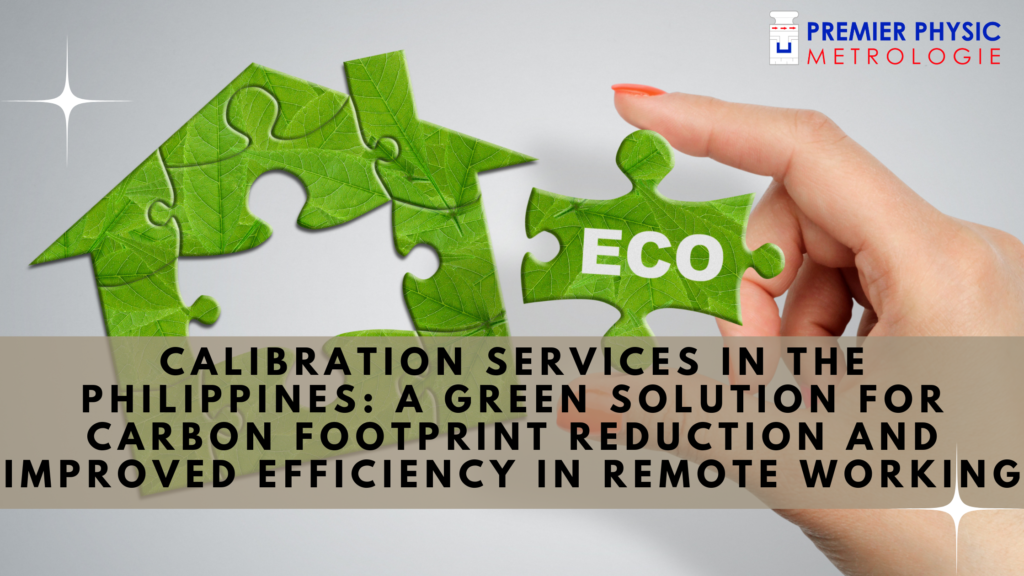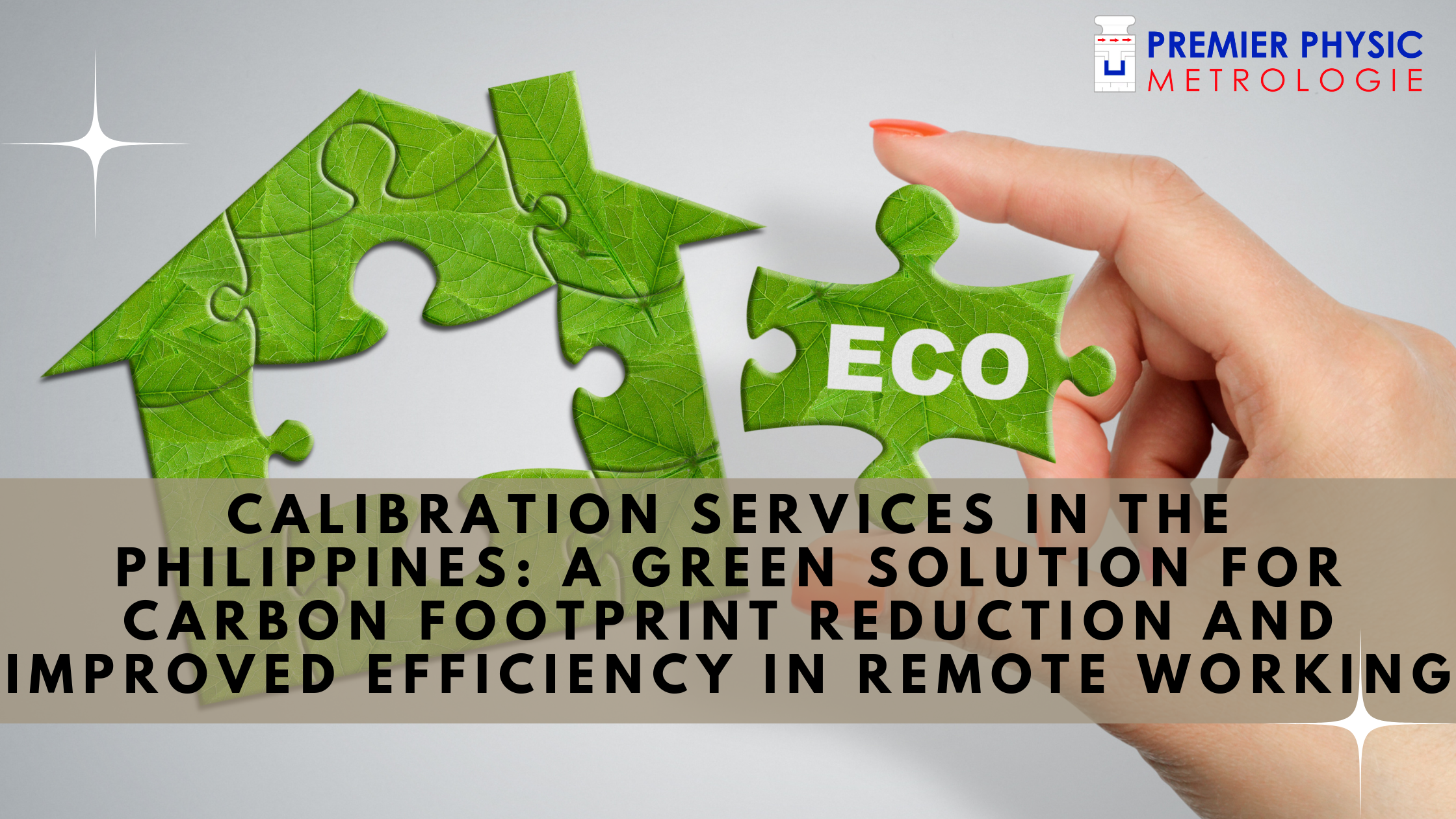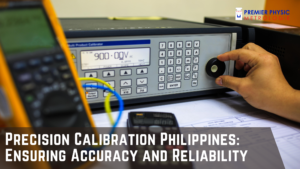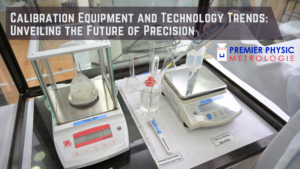
Calibration may sound like a technical term, but it simply means comparing the performance of a device or instrument against a known standard to ensure its accuracy. Calibration is important because it helps to maintain consistency and quality in various industries such as manufacturing, healthcare, and automotive, among others.
In the Philippines, calibration services are widely available and cater to a range of industries. These services are essential for businesses that rely heavily on precision instruments to maintain their operations. Calibration services in the Philippines are provided by both internal and external service providers. Although external calibration services are more popular than internal, many companies choose to have in-house calibration labs.
External calibration services offer green solutions that can contribute to carbon footprint reduction and improve efficiency in remote-working arrangements. The Philippines is gradually adopting green calibration practices, with service providers using eco-friendly methods and consumables. Green calibration services use renewable energy, recycle waste, and dispose of hazardous materials in an environmentally friendly way.
Green calibration services in the Philippines have many benefits. Apart from reducing carbon footprint, they can lead to cost savings by reducing waste, energy consumption, and unnecessary downtime. Moreover, some service providers offer on-site calibration services, which eliminates the need for downtime.
Some examples of green calibration services in the Philippines include BioCal Calibration, which offers environmentally friendly calibration services to various industries and sectors. Another example is Fluke Calibration Services, which offers eco-friendly calibration services to companies that care about the environment and do their best to reduce their carbon footprint.
In the age of remote working, calibration services are of utmost importance. Remote workers rely heavily on precision instruments, including laptops, desktops, and mobile phones, among others. Calibration services are necessary to ensure that these instruments are working optimally and that remote workers can perform their duties without any interruptions. Remote calibration services have made it possible to calibrate instruments and devices without having to visit physical offices.
In conclusion, calibration is an essential part of various industries in the Philippines. Calibration services contribute to maintaining consistency, quality, and compliance with regulations. Green calibration services offer eco-friendly solutions that can contribute to carbon footprint reduction and cost savings. In the age of remote working, calibration services are essential to ensure that workers can perform their duties optimally and without interruptions.
What is calibration?
Calibration is the process of comparing the accuracy of a measuring instrument to a known standard. It ensures that the readings of the instrument are reliable, consistent, and accurate. Calibration is important in various industries, including manufacturing, healthcare, and transportation.
In manufacturing, calibration is crucial to producing products with the correct specifications. For instance, a poorly calibrated machine can result in defective products, leading to costly recalls. It can also cause downtime, loss of productivity, and affect the quality of the products manufactured. Similarly, in healthcare, accurate and reliable diagnosis and treatment of patients depend on the calibration of medical equipment.
Calibration mitigates risks associated with measurement errors, equipment failures, and environmental factors that can alter the accuracy of measuring instruments. Through calibration, the accuracy, reliability, consistency, and precision of measuring equipment can be ensured.
Calibration is done using different methods such as internal calibration, external calibration, or by comparison with a certified reference. All measuring devices require calibration, from thermometers, pressure gauges, balances, and flow meters to complex analytical instruments.
By calibrating equipment, organizations can avoid costly production errors, prevent equipment downtime, and meet regulatory standards. In the next section, we’ll explore further the importance of calibration and how it benefits organizations.
Types of calibration
Calibration services are essential to maintain the accuracy and precision of equipment used in different industries. There are two types of calibration services: internal calibration and external calibration.
Internal calibration refers to the calibration performed by trained personnel within an organization. This type of calibration is suitable for equipment that is used frequently and needs constant analysis. Companies use this type of calibration to ensure that their equipment is maintained to high standards.
External calibration involves sending the equipment to a specialist service provider. The calibration is performed off-site, and the results are reported back to the company. This type of calibration is time-consuming and expensive but necessary. External calibrations are essential for equipment that is not used frequently, and companies that want to outsource their maintenance and testing services.
The choice of calibration type depends on the type of equipment, the industry, and the nature of the business. While internal calibration offers flexibility, external calibration is more comprehensive and accurate.
Why is calibration important?
Calibration may not be a term that’s often used or heard in everyday life, but it plays a critical role in many industries. Calibration is essentially the process of testing and adjusting equipment to ensure it meets industry-specific standards and requirements. The goal of calibration is to ensure accuracy, reliability, and consistency in the performance of equipment, ultimately improving the quality of products and services.
Maintaining consistency and quality is one of the primary reasons why calibration is so important. Accuracy is crucial in many industries, whether it be in the pharmaceutical industry, manufacturing industry, or even the food industry. A simple miscalibration could result in a significant difference in the end product, leading to inaccuracies and a lower-quality product. It’s incredibly important to ensure that equipment is calibrated regularly, especially equipment that is used frequently.
Another reason calibration is essential is because it helps to avoid downtime and reduce costs. If equipment is not calibrated correctly, it can cause malfunctions, breakdowns, and result in expensive repair costs – not to mention, production delays. The downtime caused by malfunctions and repairs can put a significant dent in a business’s productivity and, in turn, affect its revenue. Calibrating equipment regularly reduces the chances of malfunctions, reduces repair costs, and minimises downtime.
Calibration is also necessary for ensuring compliance with regulations and standards. Many industries have regulations and standards that organisations must adhere to. Compliance with these standards is crucial because it ensures that businesses are operating ethically and safely. Calibration helps to ensure that the equipment being used meets these standards and regulations.
In summary, calibration is essential because it helps maintain consistency and quality, reduces downtime and costs, and ensures compliance with regulations and standards. Regular calibration of equipment can have significant positive effects on a business’s productivity and bottom line.
Calibration: A Green Solution
Calibration not only benefits organizations in terms of accuracy and reliability but also offers a green solution for carbon footprint reduction. Let’s explore how calibration contributes to environmental sustainability.
1. Energy Efficiency
Calibration helps optimize energy consumption by ensuring that systems and equipment operate at their peak efficiency. When instruments are accurately calibrated, they consume only the necessary amount of energy, eliminating wastage. This reduction in energy consumption directly translates to a lower carbon footprint.
2. Emissions Reduction
Accurate calibration minimizes the risk of emissions by maintaining optimal performance levels in industrial processes. By calibrating combustion systems, for example, organizations can ensure efficient fuel combustion, resulting in reduced greenhouse gas emissions. Calibration also helps in monitoring and controlling emissions from industrial stacks, further contributing to a greener environment.
3. Waste Reduction
Calibration plays a crucial role in waste reduction. By accurately measuring and controlling processes, organizations can minimize material waste and prevent overproduction. Calibration also aids in the proper disposal of hazardous waste by ensuring that it meets regulatory standards, preventing environmental contamination.
4. Resource Conservation
Efficient calibration practices enable organizations to conserve resources by optimizing their use. By accurately measuring the consumption of raw materials, water, and energy, organizations can identify areas of improvement and implement strategies for resource conservation. This not only reduces operational costs but also minimizes the overall carbon footprint.
Calibration Services in the Philippines
Calibration Services in the Philippines Calibration is a process of comparing and adjusting the accuracy of an instrument or equipment to ensure that it meets the required standards. Calibration services are necessary to maintain the reliability and quality of instruments and equipment.
The Philippines has one of the most dynamic and diverse markets for calibration services in the Asia Pacific region. Calibration services in the Philippines are provided by a number of different companies that offer calibration of a wide variety of instruments and equipment such as temperature and humidity gauges, pressure gauges, scales, and electrical equipment, among others.
Green calibration services have gained popularity in recent times and are now being offered by some calibration service providers in the Philippines. These services are eco-friendly and help industries in reducing their carbon footprint. The use of calibration services in remote working is also becoming increasingly important as more people are working from home due to the COVID-19 pandemic.
The benefits of using green calibration services include reduced environmental impact, a decrease in waste production, and energy efficiency in production. Additionally, using green calibration services can save companies money by reducing operational costs. An example of green calibration services in the Philippines is the use of solar-powered calibration equipment.
In conclusion, calibration services are crucial to ensure the accuracy and reliability of instruments and equipment. The Philippines has a diverse market for calibration services, and green calibration services have become increasingly popular in recent times. Using these services not only helps in reducing the carbon footprint but also reduces production costs. Additionally, with the growing trend of remote working, the use of calibration services in this sector has become even more important.
Calibration and Remote Working
With the rise of remote working, calibration has become more important than ever. Every industry requires calibration to maintain consistency and quality. However, with remote workers, the need for calibration has increased twofold. Remote workers often use their own equipment for work, which may not be calibrated, leading to inconsistencies in quality and data.
Calibrating equipment for remote work can be a challenge as it requires technicians to perform the calibration remotely, which may not always be possible due to technical restrictions. Technicians may also struggle to access the equipment and may have to rely on remote assistance from the workers themselves.
Despite these challenges, using calibration services for remote workers can bring about a host of benefits. Calibration can help remote workers to maintain consistency in their work, leading to higher quality in the output. This, in turn, can lead to a reduction in costs, as the need for rework and downtime is reduced.
Additionally, using calibration services can help remote workers to ensure compliance with regulations and standards, something that has become increasingly important in recent times. With remote calibrations, workers can be sure that their equipment is properly calibrated, leading to less risk of non-compliance.
Overall, as remote working becomes more prevalent, calibration services become more important. Using calibration services for remote workers can help maintain quality and consistency while adhering to regulations and standards. Although there may be some challenges with remote calibration, the benefits far outweigh the risks. So, avail calibration services today and enjoy the benefits of having your equipment calibrated without even stepping out of your home!
Conclusion
If you want to maintain consistency and quality, avoid downtime and reduce costs, and ensure compliance with regulations and standards, calibration is key. And if you want to make a difference for the environment, green calibration services can help you reduce your carbon footprint while enhancing your business’s efficiency. That’s why it’s important to consider using calibration services in the Philippines that are eco-friendly and aligned with sustainable practices.
By using green calibration services in the Philippines, you can contribute to reducing the environmental impact of your business activities while benefitting from enhanced precision, accuracy and reliability. Green calibration services use environmentally friendly techniques and equipment, such as solar panels, reusable materials, and low-energy consumption devices, to minimize waste, emissions, and energy consumption, and thus reduce carbon footprint.
There are several benefits of using green calibration services in the Philippines, such as reducing energy and resource consumption, avoiding hazardous waste generation, and complying with environmental regulations.
Moreover, as remote working is increasingly becoming the new norm, calibration services can help ensure the accuracy, safety, and reliability of remote equipment and tools. However, remote calibration also poses some challenges, such as limited access to equipment and tools, communication issues, and compliance with safety standards. That’s why it’s important to use calibration services that are skilled in remote calibration and can provide tailored solutions that suit your remote working needs.
To summarize, calibration is essential for ensuring quality, safety, and efficiency across different industries. By using green calibration services in the Philippines, you can also contribute to environmental sustainability and reduce your carbon footprint. Moreover, by using calibration services for remote working, you can ensure the accuracy and reliability of your remote equipment and tools. So, let’s make calibration a green and smart solution for a better future.
FAQs about Calibration: A Green Solution for Carbon Footprint Reduction
1. Why is calibration important for reducing carbon footprint?
Calibration ensures accurate measurements and optimal performance of instruments and systems, leading to energy efficiency, emissions reduction, waste reduction, and resource conservation. All these factors contribute to a significant reduction in carbon footprint.
2. How does calibration contribute to energy efficiency?
Calibration ensures that instruments and systems operate at their peak efficiency, consuming only the necessary amount of energy. By eliminating energy wastage, calibration helps organizations achieve higher energy efficiency and a lower carbon footprint.
3. Can calibration help in reducing emissions from industrial processes?
Yes, accurate calibration plays a crucial role in reducing emissions from industrial processes. By calibrating combustion systems and monitoring emissions from industrial stacks, organizations can ensure efficient fuel combustion and control the release of greenhouse gases, thereby contributing to emissions reduction.
4. Does calibration have any impact on waste reduction?
Absolutely. Calibration helps organizations minimize waste by accurately measuring and controlling processes, preventing overproduction and material waste. It also ensures proper disposal of hazardous waste, reducing the risk of environmental contamination.
5. How does calibration aid in resource conservationCalibration aids in resource conservation by enabling organizations to optimize the use of raw materials, water, and energy. By accurately measuring resource consumption, organizations can identify areas of improvement and implement strategies to conserve resources. This not only reduces operational costs but also minimizes the overall carbon footprint by reducing the demand for resources.
6. Can calibration contribute to a greener future?
Certainly! Calibration offers a green solution for carbon footprint reduction by promoting energy efficiency, emissions reduction, waste reduction, and resource conservation. By implementing proper calibration practices, organizations and individuals can actively contribute to a greener future and combat climate change.




